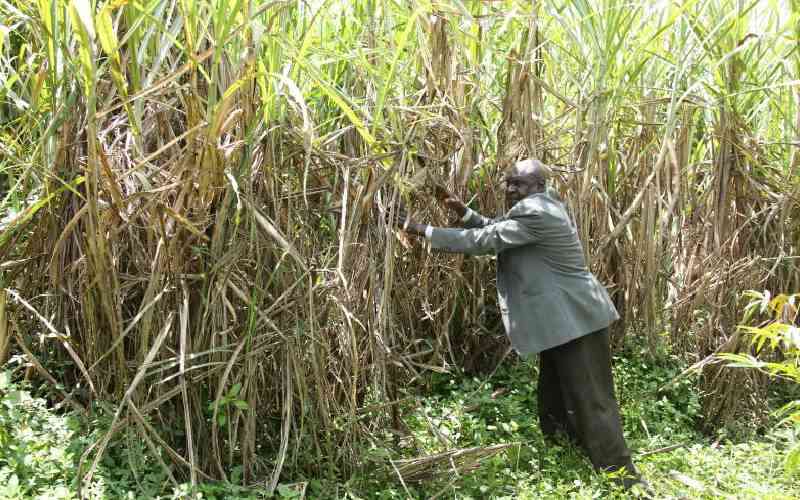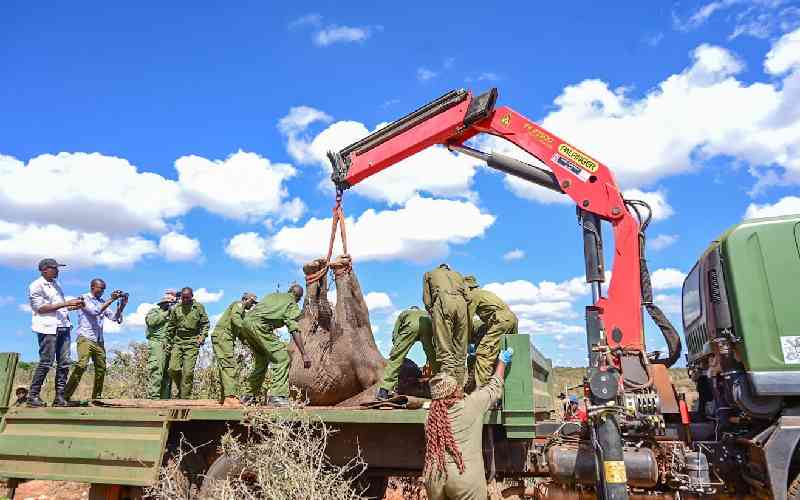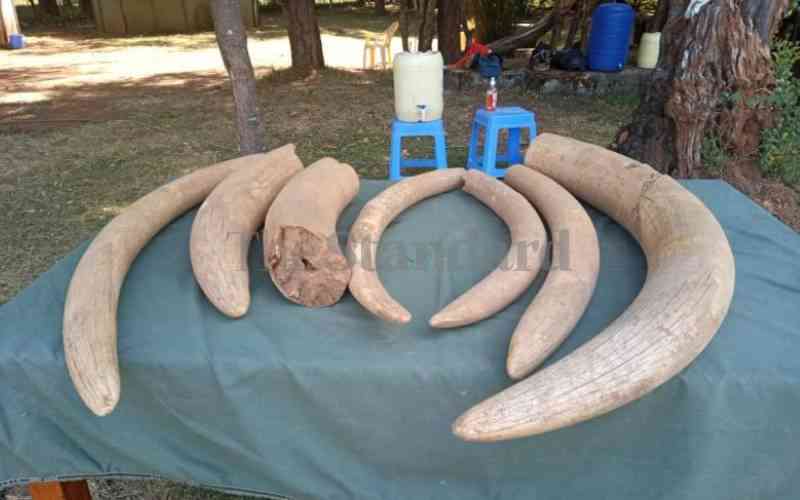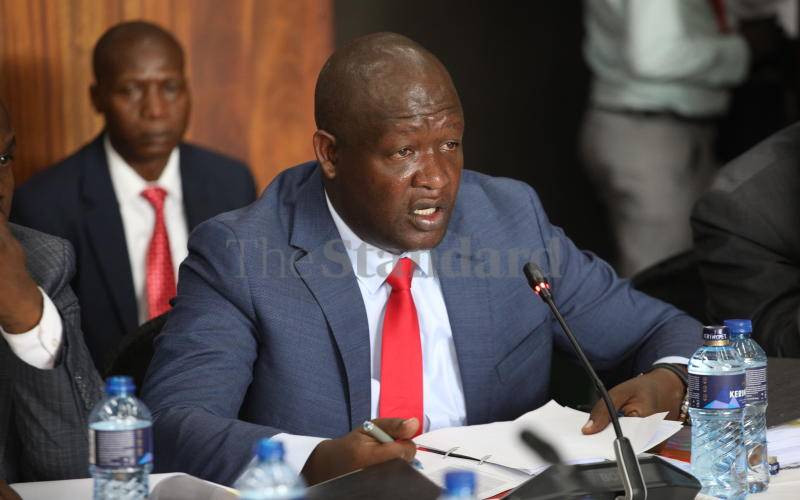NAIROBI: Some conservationists’ persistent claims that public officials were colluding with traffickers to sell Government-held elephant ivory and rhino horn stockpiles have been discounted. Kenya’s first-ever comprehensive inventory of national stockpiles found that 137 tonnes of elephant ivory were intact by end of August.
Environment and Natural Resources Cabinet Secretary Judi Wakhungu announced that the inventory teams counted 25,052 pieces of ivory weighing 137.679 tonnes and 1,248 pieces of rhino horns weighing 1.519 tonnes.
Prof Wakhungu said systems put in place by Kenya Wildlife Service (KWS) for the management and storage of trophies were robust, and with minimal adjustments, meet the highest required international standards.
The digital inventory laid the foundation for subsequent actions, including plans to destroy all ivory stockpiles before the end of the year as reaffirmation of Kenya’s commitment to put ivory beyond economic use.
In the last three years, poaching and wildlife trafficking have become growing challenges for Kenya and 38 other elephant range states in Africa. Concerted local and international efforts are, therefore, required to disrupt and destroy the illegal systems and illicit economy, which are sustained by ivory and trophies from endangered wildlife species.
The Government kicked off a digital inventory taking and DNA sampling exercise on ivory and rhino horn stocks on July 21, which ended on August 27, 2015, as part of efforts to comply with the 43-year-old United Nations Convention on International Trade in Endangered Species (CITES) convention.
CITES requires that all State parties ascertain steps to properly manage ivory and rhino stockpiles in the country, including court exhibits and any other that may be under the custody of other agencies by virtue of their legal mandate.
The inventory forms the basis for future national audits in an effort to manage wildlife. The exercise involved collection of elephant ivory and rhino horn samples, which will be used to create a DNA reference library for profiling the national population of elephants and rhinoceros. The DNA reference library is expected to help in analysing forensic evidence for use in prosecution of wildlife crime in the East African region.
The inventory was done in accordance with the Wildlife Management and Conservation Act 2013 that requires that KWS undertakes an audit every year of all stockpiles in the country and the Cabinet Secretary publishes the results in the Kenya Gazette.
The exercise involved partners such as Stop Ivory, a UK-based not-for-profit organisation alongside Save the Elephants and Ernest & Young audit firm, who offered technical and financial contribution.
Relevant Government agencies; Office of Director of Public Prosecutions (ODPP), Judiciary, Kenya Revenue Authority, Kenya Ports Authority, Directorate of Criminal Investigation, Kenya National Audit Office, Ethics and Anti-Corruption Commission, National Police Service, non-governmental organisations (NGOs) and inter-governmental organisations such as Lusaka Agreement Task Force and CITES Secretariat and the public were invited to take part in the exercise. Therefore, the audit was deemed transparent by all.
In 1989, Kenya led the international community in stopping the international ivory trade by symbolically burning its ivory stockpile. In response to this ground-breaking intervention, the international trade was banned. As a result, ivory trade, which serviced demand in Europe, the US and Japan, collapsed.
Consistent with international norms regarding disposal of seized contraband, President Kenyatta on March 3 burnt 15 tonnes of ivory; the largest consignment to be destroyed in Kenya, and expressed hope the rest of the world would follow suit.
Over the past three years, Belgium, Chad, China, Hong Kong, Czech Republic, Gabon, France, Philippines, and the USA have destroyed contraband elephant ivory and rhino horn but new demand from emerging markets threatens Africa’s elephants and rhinos again.
Stay informed. Subscribe to our newsletter
 The Standard Group Plc is a
multi-media organization with investments in media platforms spanning newspaper
print operations, television, radio broadcasting, digital and online services. The
Standard Group is recognized as a leading multi-media house in Kenya with a key
influence in matters of national and international interest.
The Standard Group Plc is a
multi-media organization with investments in media platforms spanning newspaper
print operations, television, radio broadcasting, digital and online services. The
Standard Group is recognized as a leading multi-media house in Kenya with a key
influence in matters of national and international interest.
 The Standard Group Plc is a
multi-media organization with investments in media platforms spanning newspaper
print operations, television, radio broadcasting, digital and online services. The
Standard Group is recognized as a leading multi-media house in Kenya with a key
influence in matters of national and international interest.
The Standard Group Plc is a
multi-media organization with investments in media platforms spanning newspaper
print operations, television, radio broadcasting, digital and online services. The
Standard Group is recognized as a leading multi-media house in Kenya with a key
influence in matters of national and international interest.









